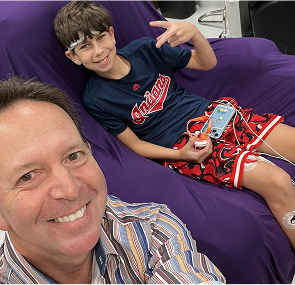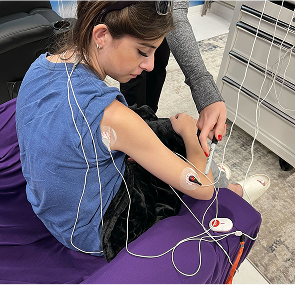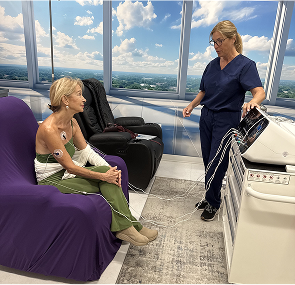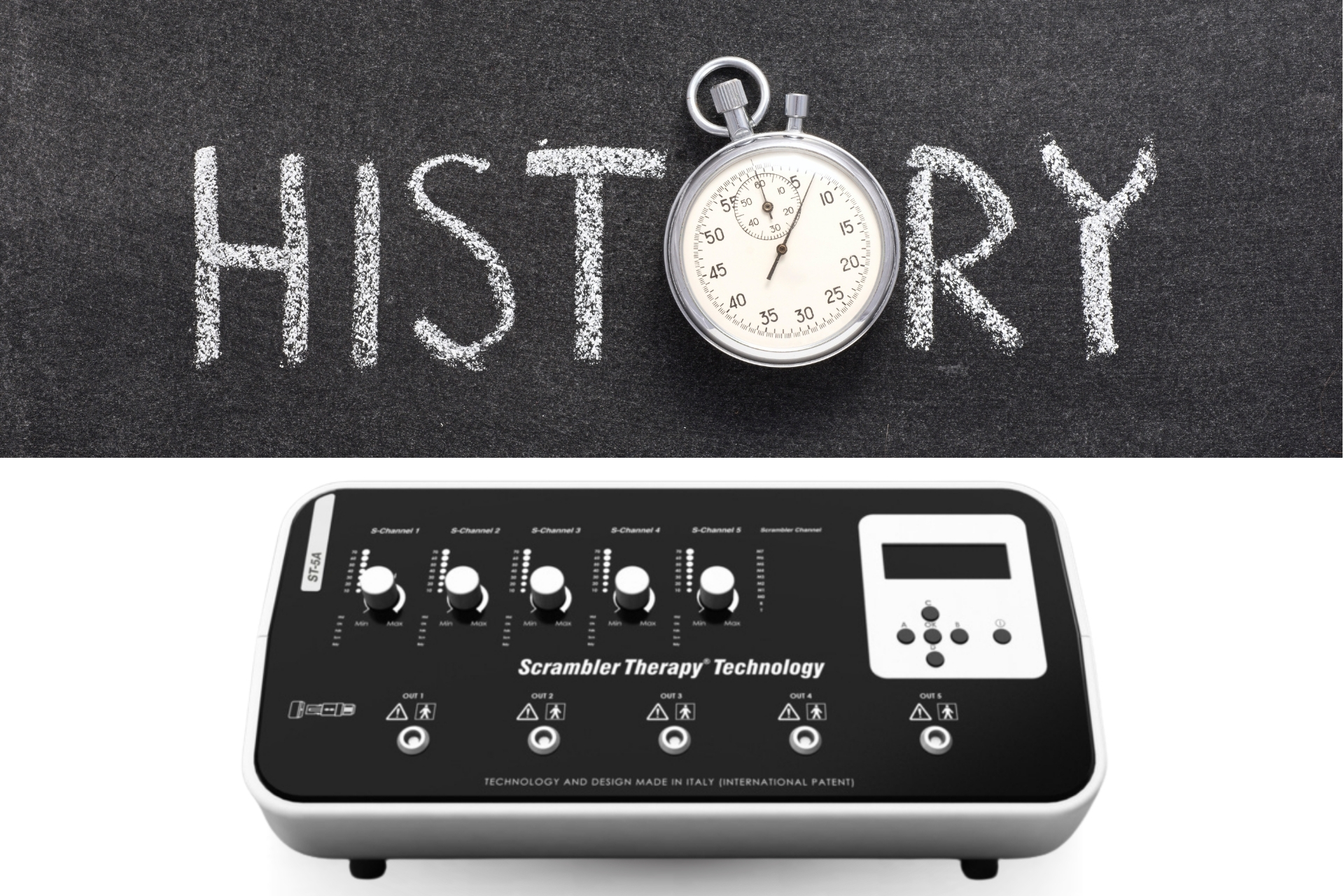How Kids with Chronic Pain of CRPS Change their Lives at South Florida Scrambler Therapy

The daily struggles faced by children with chronic pain, particularly those suffering from Complex Regional Pain Syndrome (CRPS), are frequently incomprehensible to adults. Parents describe watching their child withdraw from play, school, and joy. These young patients endure intense nerve pain, sometimes misdiagnosed for years.
CRPS in kids is rare and often misunderstood. But at South Florida Scrambler Therapy, hope replaces despair through an innovative approach: Scrambler Therapy. Under the care of Dr. Rick Markson, children experience relief—often after every other method has failed.
This article explores how this therapy reshapes young lives, grounded in science, expertise, and a child-centered approach.
What Is CRPS and Why It’s Often Misdiagnosed in Kids?
CRPS (Complex Regional Pain Syndrome) is a neuropathic pain disorder where the nervous system misfires pain signals—without ongoing injury. In kids, it’s commonly Type 1 CRPS, triggered by minor trauma without visible nerve damage.
Common Pediatric CRPS Symptoms:
- Burning pain in a limb
- Extreme sensitivity to touch or temperature
- Skin discoloration or swelling
- Mobility loss in the affected area
- Emotional distress or anxiety
Due to overlapping symptoms, pediatric CRPS is frequently misdiagnosed as:
- Growth pain
- Juvenile arthritis
- Psychosomatic conditions
- Sports injuries
Why CRPS Often Goes Undiagnosed:
- Pediatricians rarely expect CRPS in children.
- Pain symptoms may fluctuate or lack visual confirmation.
- Children struggle to articulate chronic discomfort.
Result: Months or years pass before a correct diagnosis, worsening the child’s pain pathways and emotional wellbeing.
The Science Behind Chronic Pain in Children with CRPS
Children with CRPS experience chronic pain as a result of central sensitization. This means the brain starts perceiving non-painful signals as severe pain.
Key Neurobiological Concepts:
The nervous system creates maladaptive pain loops that persist even after healing. Kids with CRPS may suffer:
- Unprovoked nerve pain
- Tactile allodynia (pain from touch)
- Temperature hypersensitivity
Children’s neuroplasticity allows for faster pain signal retraining, making therapies like Scrambler more effective when caught early.
Traditional Treatments for Pediatric Chronic Pain and Their Limitations
Most children with CRPS start with conventional treatments, such as medications and physical therapy. While necessary in early stages, these often fail when used alone.
Common Chronic Pain Treatments in Kids:
- Opioids or analgesics – risk of dependency and ineffectiveness in nerve pain
- Antidepressants (e.g. amitriptyline) – side effects like fatigue or dizziness
- Physical therapy – limited progress in cases of touch sensitivity
- CBT (Cognitive Behavioral Therapy) – valuable, but not a standalone solution
Clinical Drawbacks:
- Pediatric patients react unpredictably to adult dosages.
- Some kids become non-responsive to rehab due to intense pain.
- Prolonged discomfort can lead to depression, isolation, and school absence.
Parents often report feeling helpless as their child grows increasingly resistant to touch and fears even routine movements.
What Is Scrambler Therapy and How It Works?
The goal of non-invasive, drug-free scrambler therapy is to rewire the neural system by interfering with signals that cause chronic pain. It uses the ST-5A Calmare device to send ‘non-pain’ information to the brain via the skin.
How It Works:
- Electrodes are placed near, not on, the painful area.
- Gentle electrical signals mimic normal nerve activity.
- The brain overrides the pain signal and rewrites neural patterns.
This process, known as pain signal remapping, is ideal for children’s adaptive brains.
Scrambler vs TENS:
Scrambler’s calibrated electrotherapy offers lasting relief without medication or surgery—especially powerful in children with pediatric CRPS.
Dr. Rick Markson’s Training in Rome: Why It Matters
Dr. Rick Markson, founder of South Florida Scrambler Therapy, trained directly in Rome—the global epicenter of Scrambler Therapy development. This certification signifies elite competency in ST-5A Calmare protocols.
Why His Training Matters:
- Precision pad placement ensures maximum effect.
- Advanced calibration improves outcomes for pediatric nerves.
- His expertise allows him to adapt protocols for a child's neurobiology.
- His bedside manner builds trust with young patients and families.
In the United States, Dr. Markson is one of the top certified Scrambler specialists, having completed hundreds of patient sessions.
Adapting Scrambler Therapy for Pediatric Patients
Treating children with CRPS requires both technical adjustment and emotional sensitivity.
Pediatric-Specific Customizations:
- Smaller pad sizes for smaller limbs
- Gentle electrical settings tailored to sensitive nerve endings
- Shorter sessions to match children’s tolerance
- Visual feedback during treatment to encourage relaxation
- Friendly environment with family presence encouraged
Children often enjoy watching TV, talking, or playing games during sessions. The approach is interactive and non-threatening, reducing fear and increasing treatment compliance.
Real Stories: Children Who Found Relief from Chronic Pain
Many families arrive at South Florida Scrambler feeling like nothing works. But after Scrambler Therapy, parents witness extraordinary turnarounds.
True Outcomes:
- A 10-year-old girl walked pain-free after 8 sessions.
- A teen boy returned to school sports after a year in a wheelchair.
- A 7-year-old laughed again—her foot pain gone after three weeks.
Parents describe it as “getting our child back.” The emotional and physical revival restores normal childhood activities—school, sleep, play, and relationships.
“She hadn’t smiled in six months. In the fourth session, she was laughing and walking once more. - Parent of a patient with Scrambler
Why South Florida Scrambler Therapy Is the Best for Kids?
The clinic offers a child-focused healing environment where expertise meets empathy. Every aspect is designed to reduce fear and enhance results.
Unique Benefits:
- Pediatric-friendly space with comfort-first setup
- Highly customized protocols per child’s condition
- High success rate with CRPS and neuropathic pain
- Family involvement in every step of care
The team’s focus on communication, trust-building, and scientific rigor makes South Florida Scrambler a leader in child CRPS treatment.
What Parents Need to Know Before Starting Scrambler Therapy?
Parents often ask what to expect before starting therapy. Here’s a simple guide.
Pre-Treatment Checklist:
- Free consultation to evaluate your child’s condition
- Consent forms and medical history review
- Session schedule (usually 10–15 sessions, ~45 mins each)
- No prep required—just comfy clothes and an open mind
- Most insurance plans accepted, check with the office
Parents are encouraged to stay during sessions and ask questions freely. Children are never forced—cooperation is gently built.
FAQs About Chronic Pain, CRPS, and Scrambler Therapy
Is CRPS curable in kids?
CRPS is manageable. Early intervention with Scrambler often leads to full remission in children.
How fast does Scrambler Therapy work?
Many children feel reduced pain within 3–5 sessions. Full relief may take 10–15.
Are there side effects?
No significant side effects. Most children tolerate it well with only mild tingling.
Can this help if nothing else worked?
Yes. Scrambler is especially effective in therapy-resistant pediatric CRPS cases.
Experiencing Chronic Pain in South Florida?
.jpg)
Discover South Florida Scrambler Therapy is one of the nation’s leading clinics for noninvasive chronic pain relief, offering FDA-cleared Scrambler Therapy® for adults and children. Co-founded by Dr. Rick Markson, one of the few practitioners worldwide to receive advanced certification directly from the therapy’s inventor in Rome, our clinic delivers globally recognized expertise with compassionate, personalized care. If you or a loved one is living with treatment-resistant nerve pain, we invite you to schedule a consultation and explore a life beyond pain.
Recommended Reads:
📘 What is scrambler therapy?
📘 What to Expect During a Scrambler Session
📘 CRPS Pain Relief Without Drugs—Real Patient Stories
📘 Conditions that scrambler therapy can treat
Take the Next Step: Free Consultation at South Florida Scrambler

Every day counts when we suffer from chronic pain. South Florida Scrambler Therapy offers a free initial consultation to determine if Scrambler is right for you. Schedule Today:
- Speak directly with Dr. Rick Markson’s team
- Learn about treatment protocols and insurance
- Complete a customized treatment plan
- Start seeing results within days, not months
📞 Call Now or Visit website: www.southfloridascramblertherapy.com
📍 We serve Palm Beach, Fort Lauderdale, and Miami from our location at 100 NW 100th Ave, Plantation
You Can Follow Us through Our Social Media:
📸Instagram—Day-in-the-life stories from our patients
👍Facebook—Success journeys and community support
You deserves to laugh, and enjoy life without pain. The journey starts here.
Start Your Nerve Pain-Free Journey Today






